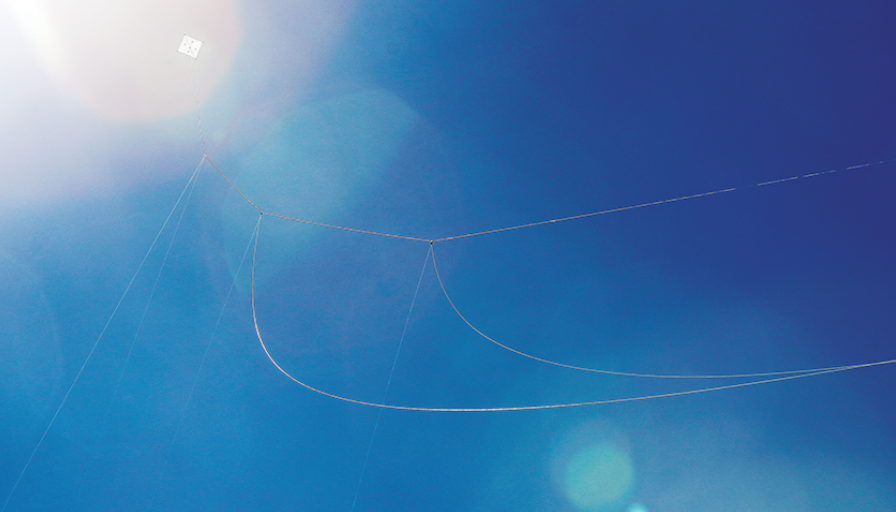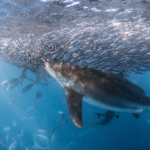Article Courtesy: floridasportfishing.com | Originally Published: 5/1/2019 | Click here for original article
Picket Fence
Expert Insight to Kite Clip Selection & Spacing
While trolling has its time and place, for many South Florida fishermen launching kites is the preferred tactic no matter the season. It’s certainly the most effective means of enticing sailfish when they are congregated over a particular depth or counter, although the coming months yield equally exciting opportunities to hang live baits from the sky as the focus turns to kingfish, dolphin and blackfin tuna.
Regardless of target species, a properly rigged kite rod is vital to success. Braided line is the choice for wind conditions up to about 25 knots and most tournament teams are equipped with multiple kite rods spooled with 50 to 80 lb. line. With electric kite reels topped off with fresh braid, anglers must now create a means for a series of release clips to be raised at various intervals as the kite furthers itself from the boat.
In the past, the electric kite reels we used featured level winds with narrow guide eyes that really only allowed the use of miniscule swivels spliced into the main line. One of the issues with this rigging technique is that you’re forced to cut the braid into multiple segments and must rely on several individual connections. We charter fish over 200 days a year (fishmiamicharters.com) and have had the small swivels rust and break, leading to a crippled spread and loss of tackle. The better approach is to whip sections of 30 lb. wax floss with consecutive half hitches to catch the kite clips and keep the braid main line intact. It’s more time consuming than simply splicing in a series of swivels, but it’s a much more reliable method. You’ll also want to use an electric reel with an open frame, like the Hooker Electric Tiagra 30 (hookerelectric.com). The furthest floss mark will have the smallest build-up of overlapping half hitches and the closest floss mark will have the largest catch to coincide with the release clip diameter. The length of the floss mark also helps keep the clip jammed down so the wind won’t allow it to creep up the main line.
As the kite is sent away from the boat, the floss on the line leaves the reel and locks onto the kite clip. The smallest hole is on the long clip that is closest to the kite and the biggest hole is on the short clip that is closest to the boat. Most fishermen use a three-clip system that allows them to fish a long, middle and short bait, but on the Double Threat we always rig with four clips. We might not always fish four baits at once, but if the long gets bit we can quickly put a bait on the open clip closest to the boat and be fishing a full spread in seconds.
Black’s (blackmarineproduct.com) release clips work great and have been the go-to for years, but the new R&R Tackle (randrtackle.com) M2 light kite clips are a fraction of the weight and really help us get lift out of our kites on summer days with little breeze. The three-clip set up has single streamlined clips with 1/16- ,1/8- and 3/16-inch holes bored out through the composite material, and there is also a four-clip kit that adds a clip with a ¼-inch diameter hole. Captain Ray Rosher has also developed a pre-rigged kite line kit comprising uninterrupted 80 lb. braid with flossed marks every 80 feet. The catch marks were designed for the M2 and R2 clips, but also work with Black’s clips.
There’s no rule regarding how far apart you should space your kite clips. Some anglers prefer their baits and clips closer together and will rig their kite marks as little as 40 feet apart. Some even tailor their kite clip spacing depending on the season or fishery. In the winter, when sailfish are the target species, kite fishing crews typically shorten the distance between release clips so multiple fish swimming together can easily locate nearby baits splashing at the surface. In the summer when teams turn their focus to smoker kings, crews can space their kite clips a bit farther from each other so they can cover more water. Kingfish aren’t pack hunters like sailfish, so anglers aren’t hindered by a larger gap in the picket fence. Conversely, if you space marks too close to each other you can have the recurring problem of baits walking off and becoming tangled with the next in line.
The way we do it on Double Threat is to space the long bait 100 feet from the kite. The middle bait is 90 feet from the long and the short is 80 feet from the middle. If you want to add a fourth clip, then it should be spaced 70 feet from the short. This distance will give you a big spread, but also remains close enough together to allow you to capitalize on multiple hookups.
It’s important to realize that the elevation of your kite has a huge impact on your spread. Ideally, you want to keep the kite around a 25 degree angle above the water. If your kite is flying too high, the distance between your baits is decreased due to simply geometry. Less than 20 degrees and it will be difficult to reel the short bait out of the water to shake off grass, or accommodate a bite on the middle or long.
Another aspect you can’t ignore is the tension of your kite clips. Too tight and a hooked fish will pull the kite down, while not enough tension and a frisky bait will pop out of the clip prematurely, forcing you to rebuild the intricate picket fence.






